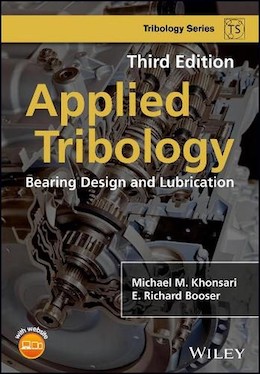
-----
The study of wear, and Archard's equation
2003
Dear Sir/Madam,
I am a graduate student of University of Utah. I am working on the adhesive and abrasive wear of spherical particles while colliding with peer particles. In generic this is the evaluation of wear of steel balls rotating inside the SAG/BALL mill. I am wondering is there any equation or formulation has developed except Archard's equation. In other words, to measure the wear rate is the Archard's equation the only available? Please guide me in this regard. Anxiously waiting for your reply.
With Regards,
graduate student - Salt Lake City, Utah
Archards equation is the basic formula for relating overall wear rates to the normal load exerted on an article, the hardness of the softer component and the wear coefficient. the major problem comes in determining the wear coefficient, as this can be influenced by many factors. as you correctly surmise, adhesive and abrasive wear will have different characteristics to simple dynamic wear. Archards equation provides a good description of the severity of wear, but it lacks "detail". If you want to consider adhesive wear, you need to take account of the particle size, plastic deformation of the parts and the role of brittle fracture. Adhesive wear can be summarized by Q = (a'*w**5/4 *d**1/2)/(A**1/4 * K**3/4 *H**1/2). where K = fracture toughness of the material, H = hardness, W = load, d = linear dimension, A = area over which the abrasive particles are spread and a = constant. Q is the Overall wear rate. In the case of erosive wear, you need to take account of the plastic deformation and velocities, so the mass removed (M) = Kp(mU**2)/2H. K is a dimensionless factor, "U" is the initial velocity, p is the density of the material being eroded. I suggest you get a good book on wear and friction and study it well!

Trevor Crichton
R&D practical scientist
Chesham, Bucks, UK
2003
I refer you to letter 6276 on derivation of Archard's Equation, and a recent follow-up comment which may be of interest to you.
Albert ClydeCauseway Institute - Coleraine, Londonderry, UK
2004
2004
Good Day Sir,
I am currently doing a research on the wear characteristics of several metals. Moreover, I also tested on the different geometry of the shape of the metals involved. I understand that there is a modified version in the sense that the constant inside Archard Equation will be different if different shapes are used. Is that true? And is there any other way for me to go about doing that(the equation)?
Thank you for your time.
student - Singapore
Where can I get wear coefficient values for different material combinations to substitute in Archard's Wear rate formula? Specifically, I am using wear coefficient value 0.02 for steel to steel contact. Is this right or wrong. Can anybody help.
Trailokya nath Patragraduate student - Salt Lake City, Utah
2004
by Khonsari & Booser

eBay or Amazon
or AbeBooks
(affil link)
One place to find Wear Coefficient information for the Archard equation is on page 87 of
Applied Tribology ⇨
Bearing Design and Lubrication
by Michael M. Khonsari
E. Richard Booser
The table at the bottom of the page will help with scoring resistance then you can take that and pick a curve from the figure at the top of the page. The .02 that you are currently using for k is a worst case value for identical metals. If there is any lubrication at all the value for k would be more like 0.005 for identical metals.
- Houston, Texas
August 25, 2008
I want to model the wear rate or volume by a general model that can be applied for brittle materials. The existing lateral crack model can not be applied directly since most of our cermet materials wear by a combination of wear mechanisms not simply by brittle fracture.
Please suggest.
researcher - Seoul National University, Seoul, South Korea
September 13, 2008
Respected sir,
My self Mr.M.S.Modi a research scholar in Masters of Mechanical Engineering.i want to know about the wear equations related to parameters like speed,load in terms of Kg,sliding distance. my work with steel and alloy and use pin on disc experiments.
I hope you will help me to finding that type of relation equation.if you have any answer about it.Explain me positive way...
Yours Faithfully
M.S.Modi
Study - Ahmedabad,Gujarat, India
February 16, 2010
May 19, 2011
hello Mr.Trevor Crichton
Wear is wearing me off! I am currently working on the wear analysis of coatings that will be used on cutting tools for high speed machining. In the process I am stuck up in the pin on disk experiment, where I have weight loss values but wear rate, wear coefficient are certainly out of my reach. please suggest me equations and some text books in this regard. the evaluation of tool life is also a question which is concerning me. Is the Taylor's equation good or anything else is suggested. please help me in this regard.
regards
sriram
student - Hyderabad
Q, A, or Comment on THIS thread -or- Start a NEW Thread